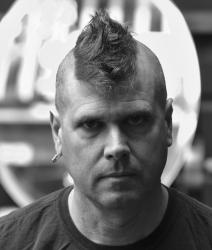If SF is “Transit First”, Why is Western SOMA a Black Hole of Parking Lots?
San Francisco has what’s called a “transit first” policy. This is supposed to mean that public transit, bikes and walking should be prioritized over cars. You can read it right here. Although this is the official policy of the city, you’d never know it from the way some neighborhoods are set up.
Take my neighborhood, Western SOMA. I live right under the pollution-spewing freeway that runs above 13th St. If you’re not from San Francisco, you know this neighborhood from the pictures that run with every national news story ever about SF’s homelessness crisis. But I digress. My home is in the center of San Francisco. Everything you could want is close by: The Mission, Civic Center, the bay, the museums, the Castro, both ballparks, downtown and all the high-rise offices in SOMA.
Why, then, is this neighborhood in the center of a city that claims to de-prioritize cars, arranged to attract so many drivers? Take a look at the map below. I’ve highlighted driver-first businesses in red. All of these businesses have vast parking lots that draw drivers from distant neighborhoods or even outside of SF. There’s Costco, Best Buy, FoodsCo, Target, Rainbow Grocery (yeah, hippies, what’s up with the line of cars idling to get into that big parking lot?), Office Max, Trader Joe’s / Bed Bath and Beyond and the giant Potrero center where the SF Seals used to have their stadium.
None of this makes any sense. It’s like plopping down a suburban shopping mall in the dense urban center of what should be one of the most cosmopolitan and European cities in the US. It’s like putting a Walmart in the middle of Le Marais in Paris, a Home Depot in Gamla Stan in Stockholm, or an Applebee’s / Michaels mini-mall in the center of Florence. As a result, this valuable, central part of San Francisco is a wasteland of cars and parking lots, when it could be so much more.
Along with the cars come pedestrian and bicyclist injuries and deaths. I could not find a comprehensive accounting of all pedestrian and bicycle injuries and deaths in the area, but what I could find was not good. From 2005-2011, there were 12 serious injuries, 2 deaths and around 100 injuries caused to pedestrians and bicyclists in the area (2005-2011 Ped. Injuries) From 2014-2021, there were three bicyclists killed by cars in just this small area of the city (2014-2021 Injuries and Deaths). Nearly all of the streets in the area are designated as “high-injury corridors” for cyclists in the city’s laughably inadequate vision zero reports (High-Injury Corridors).
There are other deaths that aren’t represented here. For example, I found no accounting for the death of Modesto Figuerdo, a local homeless man with an affection for brooms, who was killed by a hit-and-run driver in 2018.
It doesn’t have to be this way. People shouldn’t be dying because we have decided to put a high concentration of driving-inducing businesses in what could be a vibrant, central part of the city. The transit part is already there, with major bus lines running throughout. Anyone who has spent time in most cities in other countries knows how easy it is to use shopping districts without cars. Designing business districts around cars seems to be a uniquely American mistake, but San Francisco has long prided itself as being somehow different than the norm.

A ghost bike memorial for Charles Vinson who was killed while cycling at 14th St. and Folsom St. (photo: Nuala Sawyer/Hoodline)
What if you insist that big-box stores must be placed in the dead center of a city, in the face of all planning logic to the contrary? What then? How do people get their goods home? There are two cases, which I’ll address separately.
The first case is groceries. How does one get groceries home without a car? This seems like a very easy problem to solve. People in Manhattan do it. People in, oh, pretty much every other major city in the world do it. It’s not necessary to buy an entire container truck’s worth of packaged cheeze snax every time we go to the store. Normal people in normal places go to the store with a collapsible wheelie cart and buy a weeks worth of groceries, put it on the bus or tram and go home. It’s a distinctly suburban American delusion to think that shopping for food requires a full-size SUV. And for big shopping trips people can call cabs or a ride service to take them and their goods home.
The second case is large, infrequent purchases, like TVs, washing machines and refrigerators. Again, there’s no need for a massive parking lot to shop for these items. I just bought a gigantic TV from Best Buy, which is a block from my house. I looked at it in the store, bought it, and then a truck delivered it to my house later. Even if delivery costs $100, that’s a better deal than having to make a $20,000 purchase of a car, paying thousands in fees, taxes and maintenance simply to pick up a new appliance once a year. Parking lots are not required.
Even inside SF, there are plenty of vibrant business districts that don’t rely on acres of parking lots. There’s Valencia St, Divisadero, The Castro, 9th & Irving and more. They all have their problems with cars, but they don’t have businesses with large, dedicated parking the way the area around 13th St. does.
At a time when our air is choked with smoke and storms are destroying cities because of the climate emergency, it makes no sense to encourage more driving in the heart of San Francisco. It’s a relic of a stupid past when cars were king, not the future we need, a time when cars are the last choice for transportation. San Francisco can do better than this.











